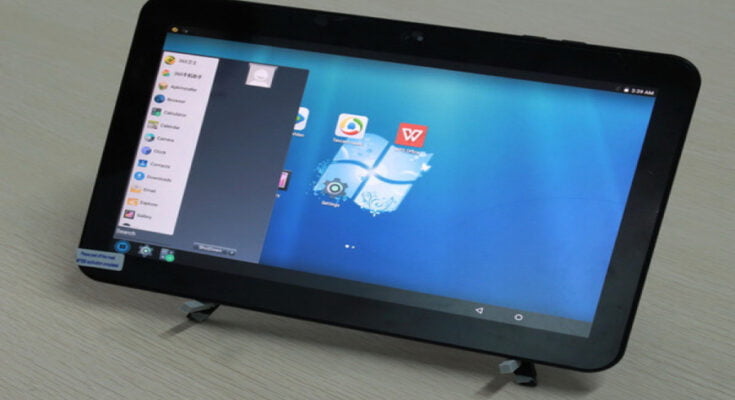Google Lens represents a paradigm shift in search technology, moving beyond traditional text-based queries to visual exploration. As our reliance on smartphones grows, Google Lens emerges as a powerful tool, leveraging the capabilities of image recognition and analysis
II. How Google Lens Works
At its core, Google Lens operates by utilizing advanced image recognition algorithms. When a user captures an image through their smartphone camera, Google Lens processes the visual data and matches it with Google’s extensive database. This process enables the tool to provide accurate and relevant information about the objects within the image.
III. Key Features of Google Lens
Text Recognition and Translation
One of the standout features of Google Lens is its ability to recognize and translate text in real-time. Whether you’re traveling or exploring foreign languages, Google Lens transforms your smartphone into a powerful language tool.
Product and Landmark Identification
Google Lens goes beyond mere text translation. It can identify products, landmarks, and objects within images, offering users instant access to additional details and context.
Optical Character Recognition (OCR) Capabilities
The OCR capabilities of Google Lens enable users to extract text from images, making it a valuable tool for digitizing physical documents or capturing information from posters and signs.
IV. Real-World Applications
Enhancing Shopping Experiences
Imagine being able to shop for items by simply pointing your camera at them. Google Lens facilitates seamless online shopping by providing information and shopping links based on images.
Simplifying Language Translation
For travelers, Google Lens breaks down language barriers by instantly translating foreign text. This feature is not only convenient but also enhances cultural exploration.
Facilitating Learning and Education
In the realm of education, Google Lens aids in learning by providing additional information on textbooks, historical landmarks, and scientific concepts through visual recognition.
V. Google Lens vs Traditional Search
Visual vs Text-Based Search
Google Lens introduces a visual element to searching, allowing users to explore the world around them by simply pointing their cameras. This contrasts with traditional text-based searches, offering a more intuitive and immersive experience.
Advantages and Limitations of Each Approach
While Google Lens offers a unique and innovative way to interact with information, traditional search methods still hold advantages. We’ll explore the strengths and weaknesses of each approach.
VI. Improvements and Updates
Google Lens has undergone significant updates since its inception. We’ll take a closer look at the evolution of the tool and discuss potential future advancements that could further enhance its capabilities.
VII. Tips for Optimizing Google Lens Use
How to Use Google Lens Effectively
Maximizing the benefits of Google Lens requires understanding its functionalities. We’ll provide practical tips for users to make the most out of this visual search tool.
Troubleshooting Common Issues
No technology is flawless. We’ll address common issues users may encounter with Google Lens and provide troubleshooting tips for a smoother experience.
VIII. Privacy Concerns and Solutions
Data Security Measures
Privacy is a paramount concern in the digital age. We’ll examine the measures Google has implemented to ensure user data security while using Google Lens.
User Control Over Information
Empowering users with control over their information is crucial. We’ll discuss the settings and options available to users for managing privacy preferences.
IX. Google Lens and SEO
Implications for Online Content Creators
With the rise of visual search, content creators must adapt their strategies. We’ll explore the implications of Google Lens on search engine optimization and how visual content can be leveraged effectively.
Leveraging Visual Content for SEO
Understanding the role of visual content in SEO is essential. We’ll provide insights into creating visually appealing content that aligns with Google Lens algorithms.
X. User Testimonials
Real-World Experiences and Feedback
Users’ experiences with Google Lens are diverse. We’ll share real-world testimonials, showcasing how this tool has made a tangible impact on individuals’ daily lives and productivity.
Impact on Daily Life and Productivity
From professionals to students, Google Lens has found its way into various aspects of daily life. We’ll explore the positive changes users have witnessed in terms of efficiency and productivity.
XI. The Future of Visual Search
Emerging Trends in Visual Search Technology
Visual search is a dynamic field with continuous advancements. We’ll discuss the latest trends shaping the future of visual search technology and Google’s role in driving innovation.
Google’s Role in Shaping the Future
As a pioneer in search technology, Google’s influence on the future of visual search is significant. We’ll delve into how the company is likely to shape the trajectory of visual search tools.
XII. Conclusion
In conclusion, Google Lens emerges as a transformative tool, redefining the way we perceive and interact with information. Its diverse applications, from language translation to enhancing shopping experiences, underscore its significance in the digital landscape. As we continue to witness advancements in visual search technology, Google Lens stands as a beacon of innovation, encouraging users to explore the world through a new lens.




